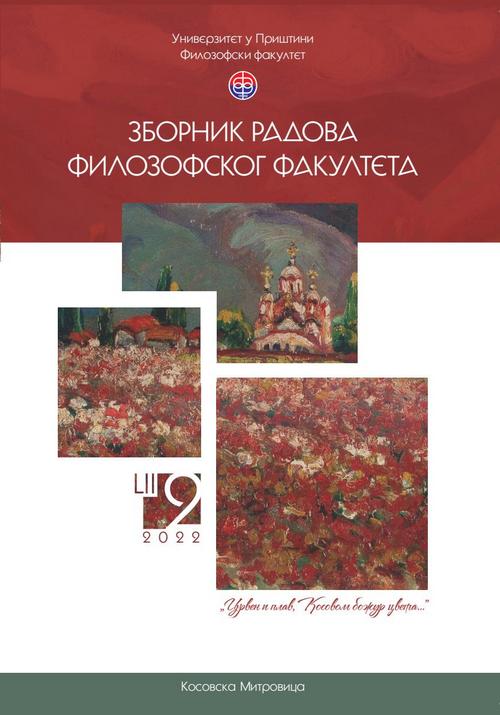Улога деспине Ирине Кантакузин у политичком животу Српске деспотовине
Sažetak
У овом раду се расправља о активној самосталној политичкој делатности деспине Ирине (Јерине) Кантакузин и равноправном односу са деспотом Ђурђем који је уживала у владању земљом. Њена улога постајала је све значајнија како је нарастајућа турска опасност постајала погубнија за Српску деспотовину. Као кључан доказ њене владавине, и права на власт, ту су два податка из извора која срећемо код Мавра Орбина и Михаила Критовула, који нас обавештавају да је деспот Ђурађ за наследника своје земље одредио своју супругу, што не би имало претераног смисла ако она пре тога није стекла искуство у државној политици и дипломатији, у одсудном тренутку српске државности. Продор Османлија и породична неслога, која је кулминирала деспинином смрћу под Рудником 1457. године, представљају завршетак појаве коју смо назвали Господство српских властелинки.
Reference
Благојевић, М. (2011). Деспот Ђурађ Вуковић и српска државност. У: М. Спремић (ур.), Пад Српске деспотовине 1459. године (33–55). Београд: САНУ.
Веселиновић, А. (2006). Држава српских деспота. Београд: Завод за уџбенике и наставна средства.
Винуловић, Љ. (2019). Портрети жена ктитора у време Лазаревића. Култура: часопис за теорију и социологију културе и културну политику, 165, 325–344.
Вукчевић, М. (1934). Ђурђева Јерина у традицији и науци. Вршац: Ј. Е. Кирхер.
Живојиновић, М. (1968). Аделфати у Византији и средњовековној Србији. Зборник радова Византолошког института, 11, 241–266.
Ивановић, М. (2013). Властела државе српских деспота (необјављена докторска дисертација). Филозофски факултет, Београд.
Ивановић, М. (2018). „Заборављени ктитори“ у средњовековној Србији. Иницијал: часопис за средњовековне студије, 6, 47–72.
Калић, Ј. (1994). Срби у позном средњем веку. Београд: Балканолошки институт САНУ.
Калић, Ј. (2006). Деспот Стефан и Византија. Зборник радова Византолошког института, 43, 31–39.
Крстић, А. (2012). Краљ Жигмунд у Борчи, или како је и када Београд предат Угрима 1427. године. Историјски часопис, 61, 115–127.
Митровић, К. (2006). Повеља деспота Ђорђа Бранковића о прихватању ктиторства над Хиландаром. Стари српски архив, 5, 229–239.
Михаљчић, Р. (1989). Крај српског царства. Београд: Београдски издавачко-графички завод.
Острогорски, Г. (1965). Серска област после Душанове смрти. Београд: Византолошки институт САНУ.
Павловић, Л. (1980). Историја Смедерева у речи и слици. Смедерево: Музеј „Димитрије Давидовић“.
Радонић, Ј. (1941). Споразум у Тати 1426. и српско-угарски односи од XIII до XVI века. Београд: Српска краљевска академија.
Спремић, М. (1994). Деспот Ђурађ Бранковић и његово доба. Београд: Српска књижевна задруга.
Спремић, М. (2005). Прекинут успон: српске земље у позном средњем веку. Београд: Завод за уџбенике и наставна средства.
Станковић, В. (2006). Комнини у Цариграду (1057–1185): Еволуција једне владарске породице. Београд: Византолошки институт САНУ.
Ферјанчић, Б. (1960). Деспоти у Византији и јужнословенским земљама. Београд: Византолошки институт САНУ.
Ферјанчић, Б. (1987). Византинци у Србији прве половине XV века. Зборник радова Византолошког института, 26, 173–215.
Filipović, N. (1971). Princ Musa i šejh Bedredin. Sarajevo: Svjetlost.
Detalji u vezi sa uređivačkom politikom, uključujući i autorska prava, dostupni su na sajtu SCIndeks.
http://scindeks.ceon.rs/journalDetails.aspx?issn=0354-3293

